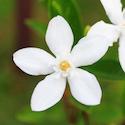On night-blooming jasmine, star jasmine and others
You have been caring for your jasmine plant with so much love for such a long time and suddenly your plant starts looking stunt with its leaves all shriveled up? You have checked the underside and surface of those leaves and you have realized that they are plagued with little aphids insects! Well, bad news, aphids are a nasty pest and they suck! Quite literally, they are sap sucking insects and they will feed on mainly the sap and fluids of your jasmine plants (like for instance your precious night blooming or Star jasmines).
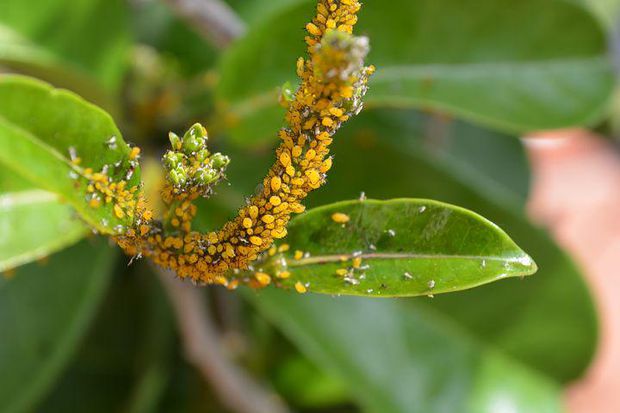
They are quite an unfortunate pest because they can destroy your jasmine plant quite quickly and they also reproduce real fast. In this post, we will explain, how to address this pest in different ways using different options, as it suits your situation best. First we need to be clear that aphids are quite a common pest and we all could have this plague eventually, no matter how much we think we are on top of things.
Therefore, our goal herein is to keep the harm and damage to a minimum degree and slowly but progressively, remove these bugs from our plants. But first, let us learn a bit more about these nasty bugs. Aphids are soft and rounded-shaped insects, belonging to the Aphidoidea superfamily, which comprises a wide range of families with different colors and long antennae. The main characteristic of aphids that we need to worry about is that they tend to lay their eggs on and eat the leaves of all kinds of perennial jasmine plants.
Aphids have a waxy and soft appearance as they tend to secrete a waxy white and/or grey substance through their bodies that would stick in the leaves ensuring their survival, especially over the winter. They produce a large quantity of a really sticky sugary substance called honeydew, which is a byproduct of their digestion, as they avidly feed from the sap of the stems and leaves of our jasmine plants. A drawback of the production of this sugary honeydew is, that it turns black and grows sooty mold fungus that will start spreading through your jasmine plant and will end up decaying it if left ignored.
Not only is honeydew an added issue, but some aphids species also do inject some toxins into the leaves causing them to curl up and slow or stop the growth, hindering your plants to shine in all their glory. If you have several jasmine plants near each other, aphids may transmit viruses between those plants and that may cause gall formations and your plants will overall end up looking stunt, yellow and lifeless.
There are several ways to get rid of aphids in your jasmine plant, once and for all. These include natural, chemical and biological management. When it comes to natural management, we can make use of easily available resources, such as water, water mixed with soap, neem oil or planting decoy plants that will "steal" the aphids from your precious jasmine plant. When your aphid infestation has gone further than just a couple of bugs, biological control is the way to go. This one includes organic pesticides and the release of beneficial predators, such as ladybugs, parasitic wasps and green lacewings. Lastly, if your choice is a chemical reagent to eliminate this nasty pest, you could use DE (diatomaceous earth) as a safe for human use and efficient way kill aphids.
How to manage an ant infestation due to aphids honeydew production?
Inevitably, when you have an active aphid infestation in your jasmine plant, you will also notice some ant visitors around your plant. This is because ants and aphids have a symbiotic and mutualistic relationship, in which ants feed on the honeydew produced by the aphids and in exchange, the ants protect the aphids from other predators, especially during the winter.
So if you succeed in removing an aphid infestation, you will also conveniently get rid of the other one. This cooperative relationship between ants and aphids goes so far, that some ants even carry aphid eggs on top of their bodies to storage chambers to be protected from other predators, as long as the honeydew keeps coming. Ants are so obsessed with this sugary honeydew, that sometimes they even cut the wings of the aphids to prevent them from leaving the plant!
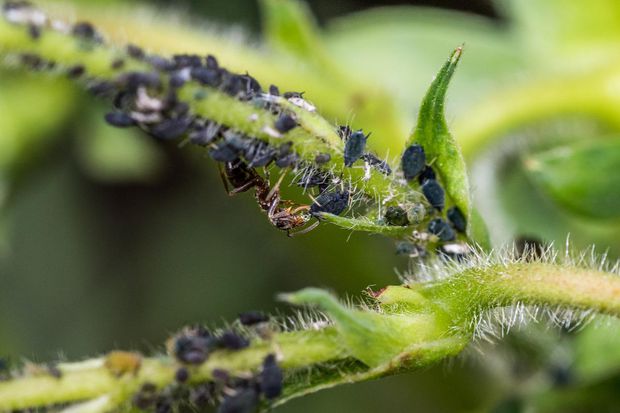
Natural management
Natural management is more like a complementary treatment, rather than the only solution. It is really time consuming and might take a very long time to kick in on its own.
Spraying water with a thick flow, straight from the hose early in the morning making sure to cover the affected leaves well, particularly on the underside of them will be quite effective in mechanically dislodging the aphids from the jasmine plant and ultimately will reduce the numbers of them by flushing them off the plant. To allow some time for the leaves to dry under the sun, you should do this task in the early hours of the day to prevent those leaves from getting burnt. If you did this flush later in the day, you would be increasing the chances for opportunistic fungi to grow at night, making the whole situation possibly worse.
When it comes to use some water to rinse off your jasmine plant, you could add about a half a teaspoon of liquid dish soap into a bottle of about 30 fl. oz. of water (or one liter) to then rise your jasmine plant once a week.
Neem oil also is a great natural insecticidal spray working in a similar manner as water mixed with soap. Spray your plant once a week for about a month. You should see a small decrease in the total number of aphids on your plant.
When it comes to water as a resource for caring for our jasmine plant and treating it from aphids infestations, keeping your plant very well watered, especially during the summer season, is essential. Your plant might suffer from droughts and heat shocks, as the sun might hit them too strongly and that will make them susceptible to aphids colonizations.
Also, jasmines will do more poorly and won’t be able to produce the proper chemicals for pest defense. Your plant is suffering from a drought or heat stress will promote the aphids population to grow further, as the sugars and nitrogen chemicals of the plant will become much more concentrated and that will allow the aphids to feed from that more nutritious sap, ingesting much more food in a shorter period of time.
Do not over fertilize your jasmine plant
If you over fertilize your jasmine plant too often, an excess of nitrogen will cause a flush of nitrogen through the stems and leaves, especially in the new and young shots and definitely be encouraging new generations of aphids to colonize your plant. Instead of feeding your jasmine plant all at once during the feeding season, you could just add small amounts very spaced out throughout the fertilization season and always try to use organic slow-release fertilizer only. Therefore, ensure your jasmine plant is well watered, so that your plant stays fit through the heat.
Decoy plants
Decoy plants are sacrificial plants that are planted in order to attract aphids, so that they leave your beloved jasmine plants alone. Ensure you prune your decoy or trap crop in the perimeter near your jasmine plant, early in the season, before your precious jasmine plant.
Allow some time for them to bloom so that the aphids colonize those plants and not your jasmine plant instead. Examples of these decoy plants can include shrubs like calendula and marigold.
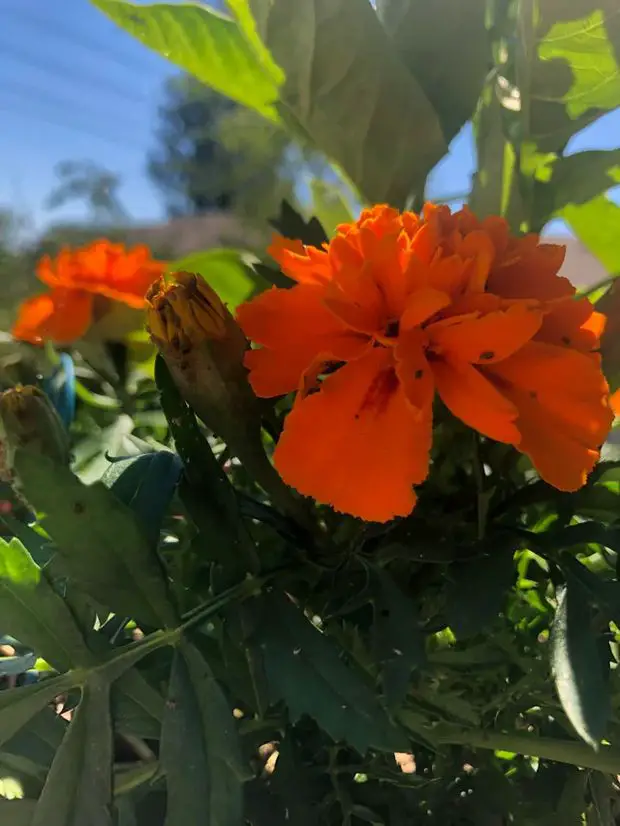
Chemical management with diatomaceous earth
DE or diatomite, most commonly known as diatomaceous earth, is a powdered formulation from microscopic organisms from the micro-algae family, called diatoms. These diatoms naturally accumulate on oceans, rivers and lakes and from there, are collected in fair amounts. A white powder, DE is actually very detrimental and deterrent to aphids, but totally harmless for human handling, if used properly. It is important to avoid inhalation of DE and use respiratory protection.
The way DE works, is that it covers the aphids parasitizing your plant, damaging their soft bodies, because the diatoms have very sharp edges, that will compromise the aphids' integrity upon contact and thus making them literally dehydrated and ultimately killing them. The type of DE that you need to acquire is the food-grade kind, as opposed to the pool grade which is used to filter microorganisms in a swimming pools because the latter is not safe for human handling. You can use this treatment once or twice a week for about two months until you start really seeing a decrease in the pest population.
Biological control with natural predators
If the aphid infestation of your jasmine plant has gone further than just a couple of bugs, a more invasive intervention is required. Aphids do have some natural predators that can be used to our advantage to get rid of them. Once aphids are gone, the natural enemies will also abandon our jasmine plant. Amongst the most important and effective natural aphid predators are ladybugs, parasitic wasps and green lacewing diptera.
Wasps
Parasitic wasps are also commonly known as braconid wasps and have the scientific name of Aphidius colemani. They will stay on our jasmine plant, after receiving a cellular signal from our plant in distress. They also will detect the honeydew produced by the aphid infestation.
Once they establish themselves on our jasmine plant, the parasitic wasps will lay their eggs inside the aphids (as they also do with caterpillars). As a result of the eggs being laid inside them, the aphids will start dying and they will turn into a brown, dry and crusty skin wrap. As this happens, the surviving aphids emit a the "warning" signal causing them to leave the plant and also die and the pest aphid population will start decreasing meaningfully within two weeks.
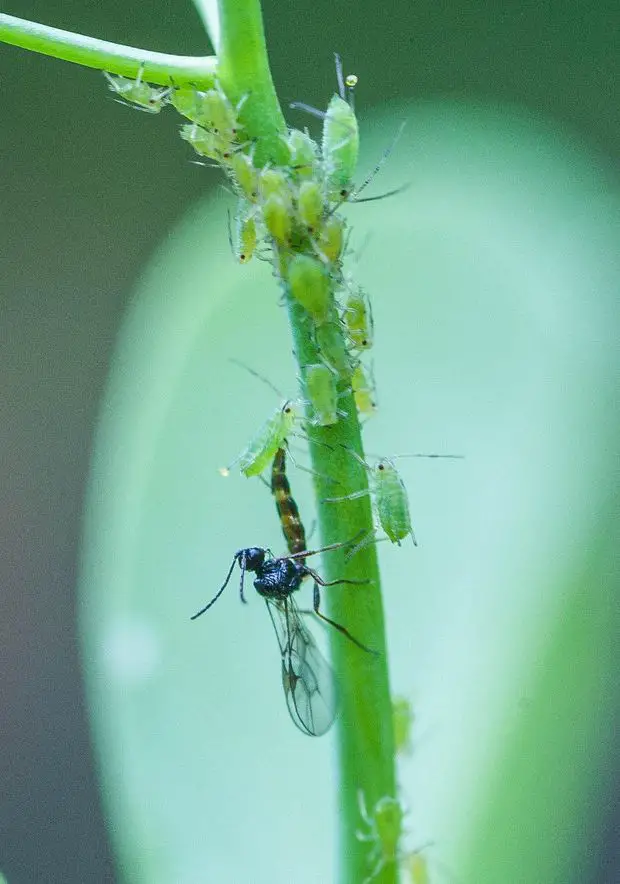
Ladybugs
Ladybugs eat aphids an are also a way to combat an aphid infestation of your jasmine plant. To that end, you will need to acquire these insects (Hippodamia convergens) commercially, and learn how to release them to optimize their establishment in your jasmine plant. Otherwise, they will fly off within a few days.
Ladybugs are a great way to combat aphid infestations, as they eat about 50-55 bugs a day without harming our jasmine plant leaves in any way. Ensure you release your ladybugs in the last hours of the evening, as they will make their way to find food during the night and they will settle by the next morning. Release them in small and contained groups in the lower parts of your plant, where the aphids are most active.
Before that, ensure that the ladybugs are kept refrigerated right after receipt from your commercial source and don’t store them longer than two to three days. A very good tip here that will help you out releasing the ladybugs around your jasmine plant, is to mist them with a very gentle spray flow of water and even leaving behind some moisture in their container on the night of their release.
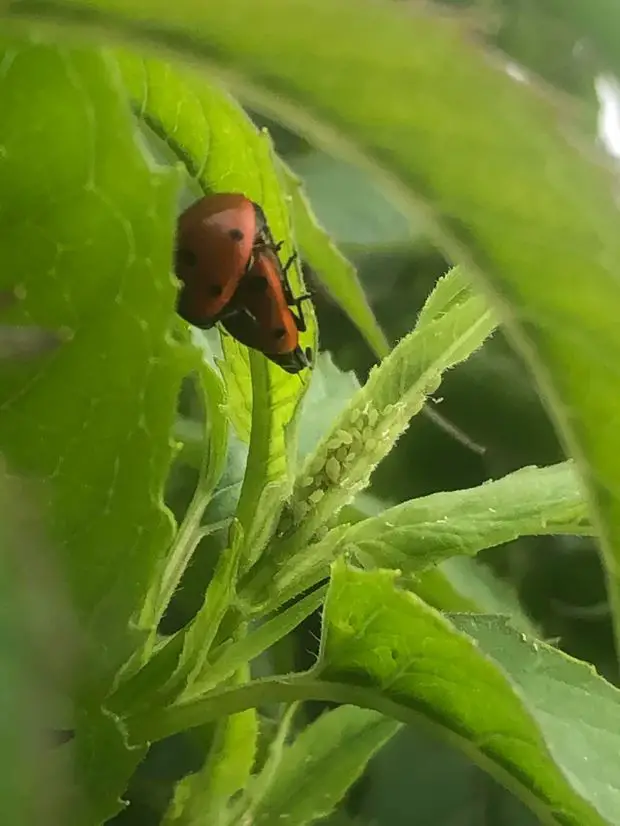
The green lacewing
Lastly, another incredible predatory insect that will exterminate your aphid colony of your jasmine plants is called the green lacewing Chrysoperia carnea. After releasing a good amount of these green lacewing, they lay eggs from which the larvae will hatch. These larvae will devour all the soft bodied aphids and their eggs in a voracious manner, even slow moving adult aphids. For that reason, green lacewing is commonly known as "aphid lions".
It is crucial to know how to release green lacewings on your jasmine plant, as the larvae will only feed for about 3 weeks after they hatch, changing their diet into honeydew when they become adults. Usually, the protocol involves the release of about 1000 eggs per 2200 square foot area (200 square meters). You need about 8-10 adult green lacewings in your jasmine plant to lay that many eggs.
After those adults have laid their eggs, the larvae will hatch within a couple of days and they will voraciously start eating the small aphids by injecting their venom and paralyzing them, sucking their body fluids afterwards. Then, when these larvae will have become adults a couple of weeks later on, they will start feeding on nectar or simply leave the area and your plant.
Make sure to release them in the evenings to avoid the heat of the day, as that could kill them. Also release them quickly, no later than 48 hours post acquisition. Otherwise, they will start cannibalizing each other. Using green lacewing, you should start to see some good relief around your aphid infestation in about two weeks time.
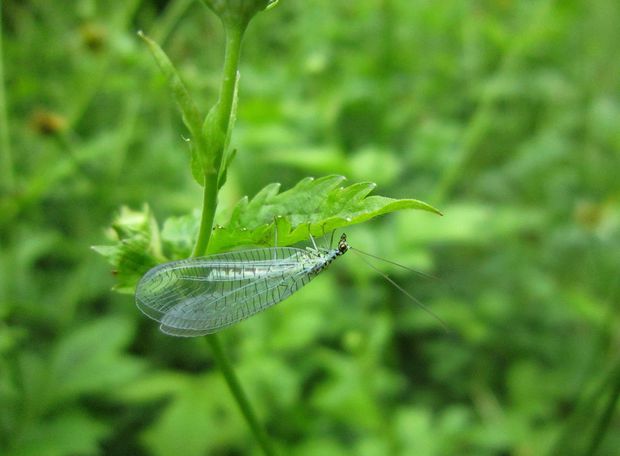
There you go! Now you have all the most commonly used treatments to help out your jasmine plants against a pesky aphid infestation avoiding them to quickly and avidly eat up and damage your plant in no time.
